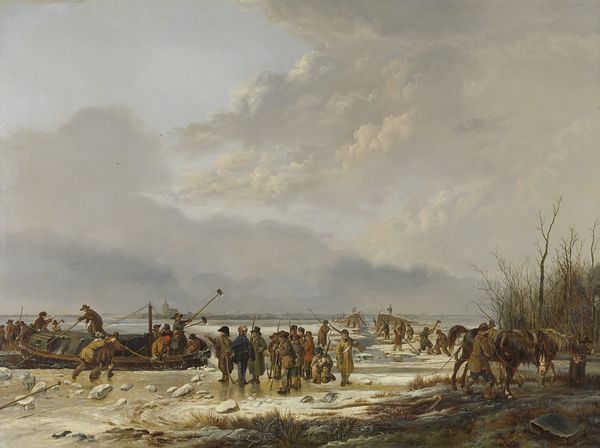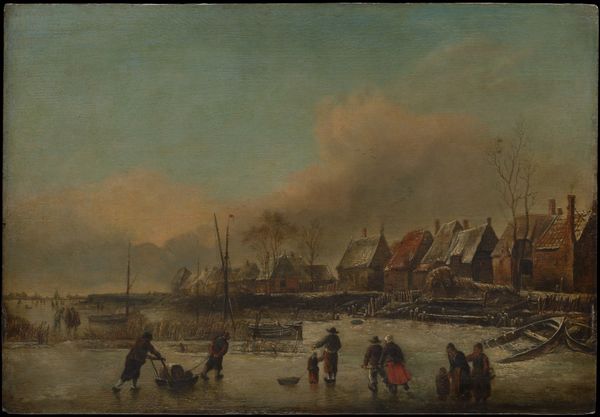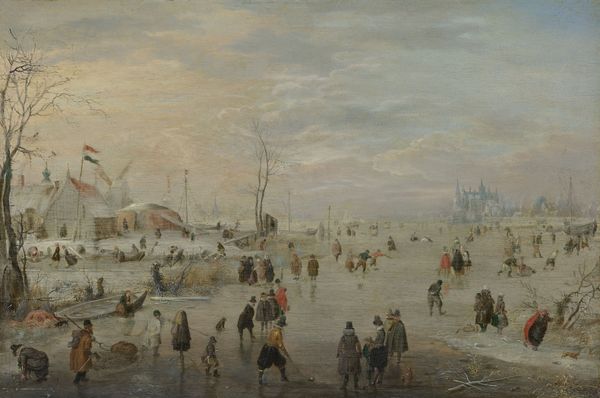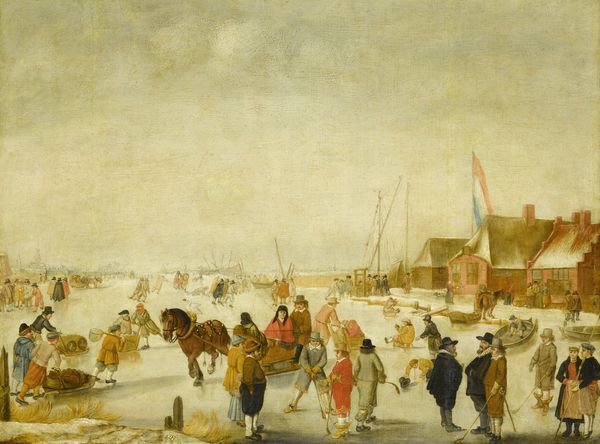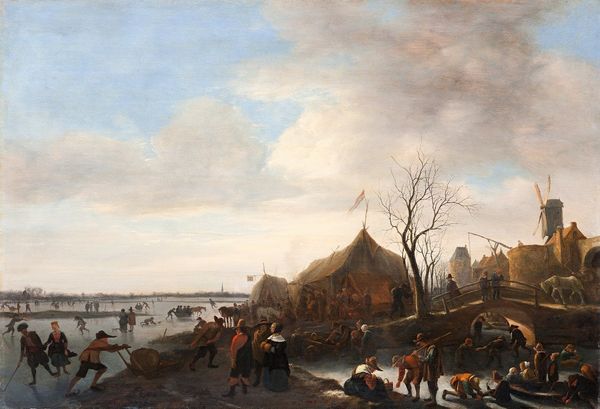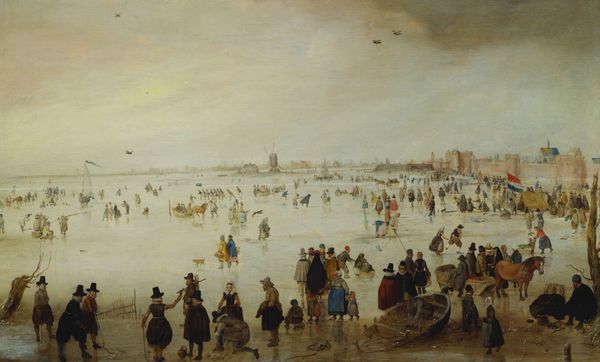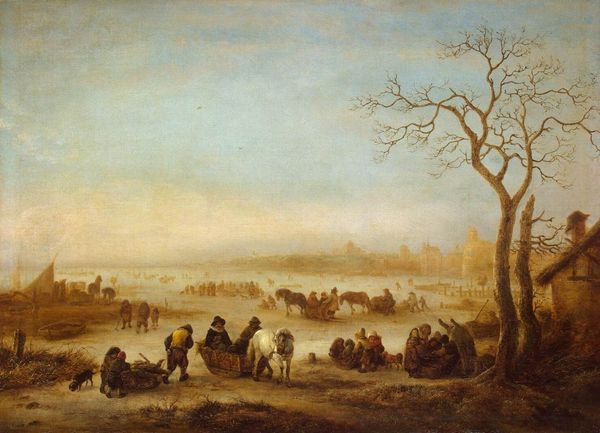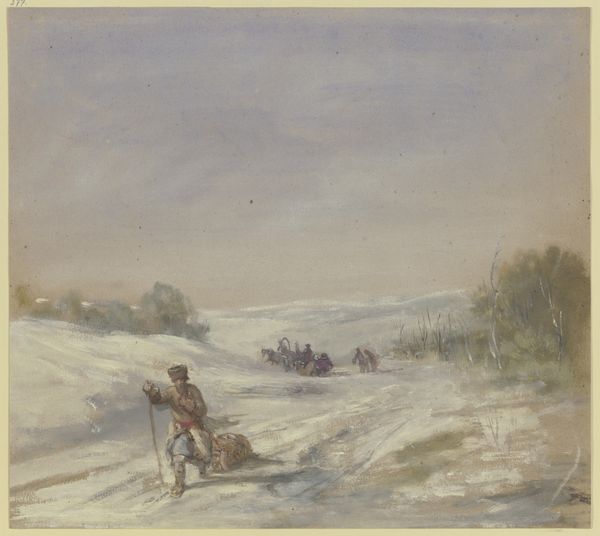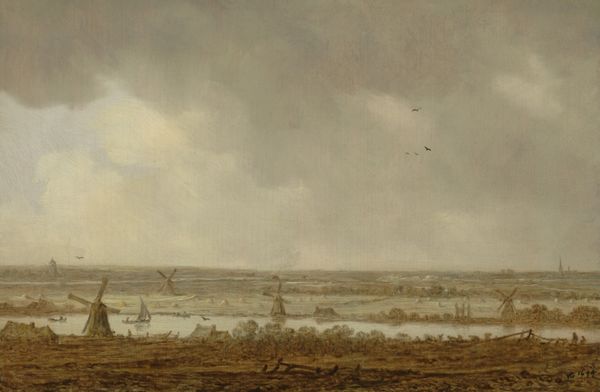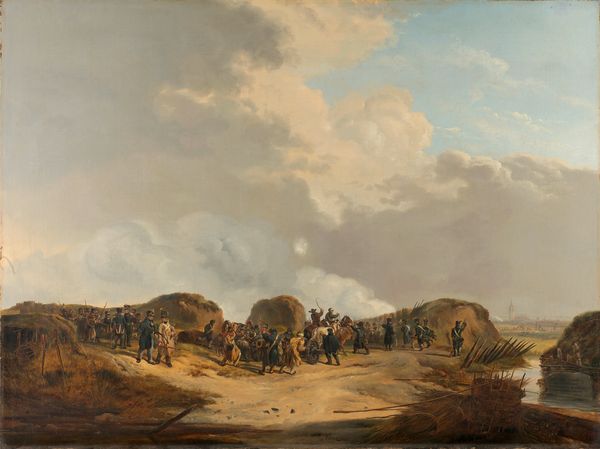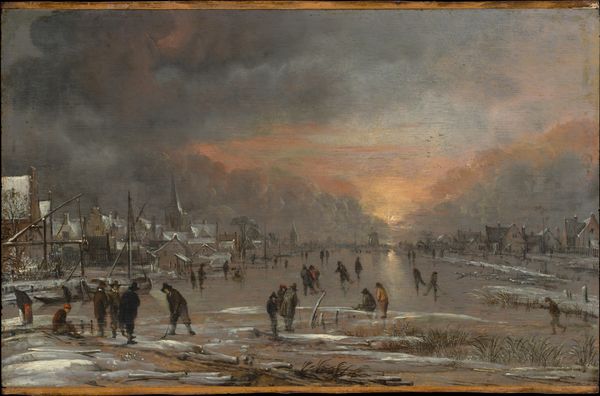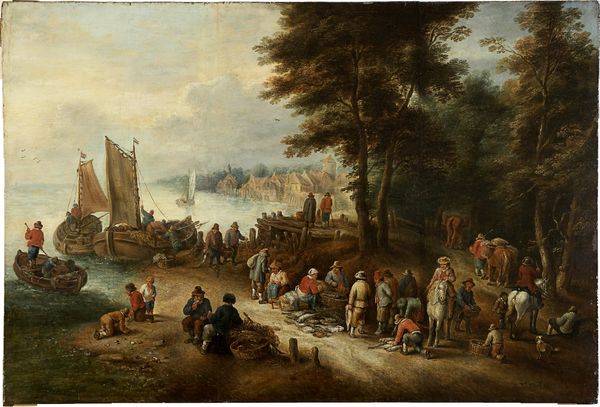
oil-paint, oil, impasto
#
baroque
#
dutch-golden-age
#
oil-paint
#
oil
#
landscape
#
figuration
#
oil painting
#
impasto
#
child
#
genre-painting
#
realism
Dimensions: 20.4 x 28.7 x min. 0.5 cm
Copyright: Public Domain
Curator: Isaac van Ostade's "Skaters on the Ice," believed to have been completed between 1642 and 1645, offers a vibrant slice of Dutch Golden Age life, now residing here at the Städel Museum. Editor: My initial impression is of a chilly day, though brimming with communal energy. The figures huddle and glide, their breath almost visible in the muted light. Curator: Precisely. Ostade, steeped in the Dutch tradition of genre painting, doesn't merely depict; he encapsulates a shared experience. Look how he uses oil paint to create that luminous sky, typical of the period's realism. Editor: And what strikes me is the undercurrent of community. The scene seems a celebration of resilience during what may well have been a time of social and political upheaval. This frozen expanse becomes a democratic playground, devoid of societal hierarchies. Curator: Indeed. Winter landscapes during the Dutch Golden Age often served as symbolic spaces reflecting societal harmony and collective identity. Skating was accessible to all, acting as a potent visual symbol of social cohesion. Notice the stark tree on the right; for me it acts almost as a visual metaphor. Bare branches hinting at vulnerability, while its roots are deeply buried in the ice. Editor: Symbolism aside, Ostade’s mastery also reveals an intimate connection between the Dutch and their landscape. Winter becomes less an obstacle and more a medium for play and congregation. The people actively participate and find joy in what nature presents. Curator: Consider also how childhood is framed; look at the children with the toboggans. This motif reinforces the importance of recreation in maintaining societal health. These paintings highlight the continuity of tradition across generations and embed the cyclical rhythm of the seasons. Editor: It all makes one ponder what significance winter held for this culture— beyond its immediate realities. It seems clear now how this scene is deeply layered and nuanced with a symbolic undercurrent that is still so palpable today. Curator: Ultimately, this painting offers a captivating exploration into Dutch history and its influence on societal cohesion in the Golden age. Editor: Yes, I'm moved by how everyday recreation offers glimpses of communal spirit. A quiet assertion, almost, of shared resilience over icy divides.
Comments
No comments
Be the first to comment and join the conversation on the ultimate creative platform.
